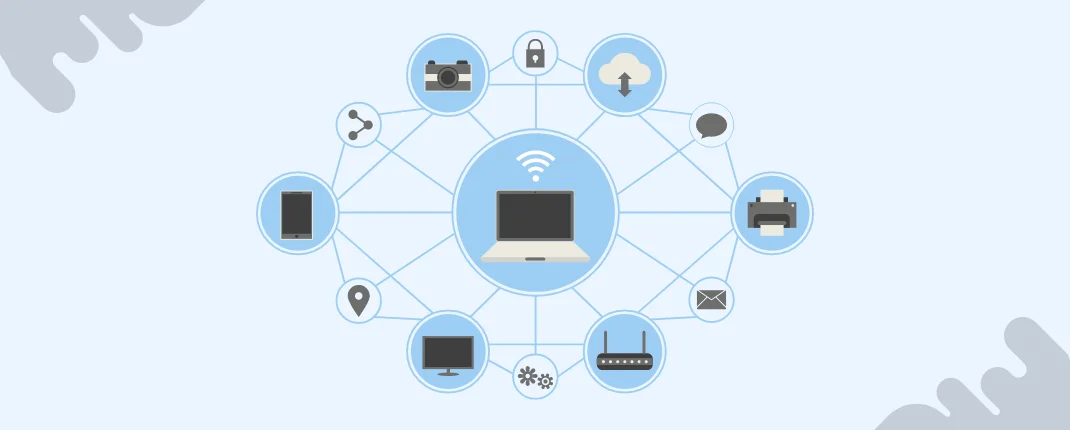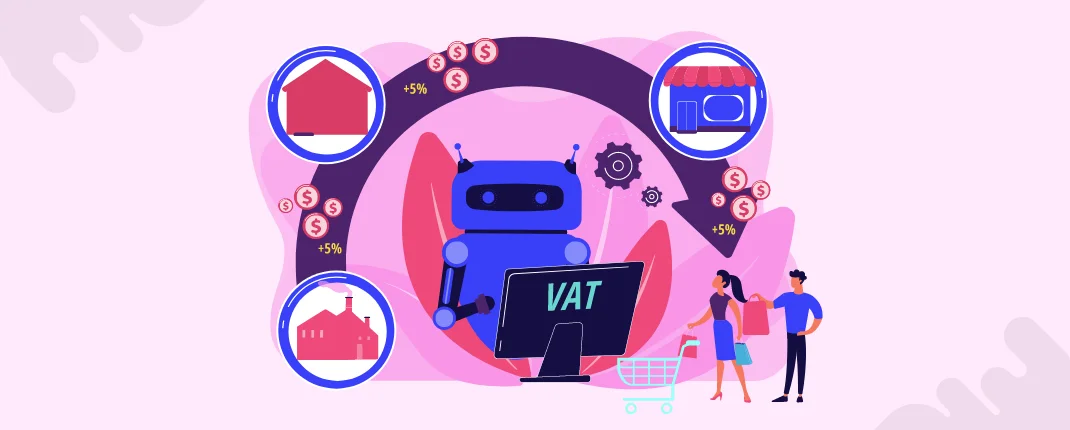
Muskan Taneja
5 min read
Introduction
AI and IoT are transformative technologies that, when combined, can lead to the creation of powerful and smart applications. IoT App Development involves creating applications that leverage the connectivity of devices and sensors to collect, analyze, and act upon data in real-time. Integrating AI into IoT applications enhances their capabilities, enabling smarter automation and decision-making.
In this blog, you will learn how to leverage AI in IoT app development for smarter automation, what are its benefits and how much it costs.
So, without further ado, let's get started.
What is IoT App Development?

IoT App Development refers to the process of creating software applications that interact with and control IoT devices. These devices, embedded with sensors and connectivity features, gather data and communicate with each other through the internet. IoT applications play a crucial role in processing and making sense of the vast amounts of data generated by these devices.
Benefits of Leveraging AI in IoT App Development for Smarter Automation

Integrating Artificial Intelligence with the Internet of Things in app development can lead to a wide range of benefits, particularly in automation. Here are several advantages of leveraging AI in IoT app development for smarter automation:
-
Enhanced Decision Making
AI algorithms can analyze large volumes of data IoT devices generate in real-time. This analysis enables smarter and faster decision-making, allowing the system to respond to changing conditions promptly.
-
Predictive Analytics
AI can use historical and real-time data from IoT devices to predict future trends and events. Predictive analytics help in anticipating issues or optimizing processes before problems arise, improving overall system efficiency.
-
Optimized Resource Utilization
AI can optimize the use of resources based on real-time demand and supply information gathered from IoT devices. This leads to more efficient utilisation of resources, reducing waste and costs.
-
Automation and Autonomy
AI-powered IoT applications can automate routine tasks and processes without human intervention. Devices can make autonomous decisions based on AI algorithms, leading to increased operational efficiency.
-
Energy Efficiency
AI can optimise energy consumption by analyzing patterns and adjusting IoT device operations accordingly. This helps in reducing energy costs and promotes sustainable practices.
-
Personalization and User Experience
AI can analyze user behaviour and preferences based on IoT data to deliver personalized experiences. This personalization enhances user satisfaction and engagement with IoT applications.
-
Security and Anomaly Detection
AI algorithms can detect anomalies and potential security threats by analyzing patterns in IoT data. This proactive approach helps in identifying and mitigating security risks in real-time.
-
Scalability and Flexibility
AI-driven IoT applications are often more scalable and flexible, adapting to changing requirements seamlessly. The system can evolve and grow without significant manual intervention.
-
Cost Savings
Automation through AI and IoT can lead to cost savings by reducing the need for manual monitoring and intervention. Operational efficiency improvements also contribute to overall cost reductions.
-
Remote Monitoring and Management
AI enhances the capabilities of remote monitoring and management of IoT devices. This is particularly beneficial in scenarios where physical access is challenging, such as in industrial settings or remote locations.
By combining AI and IoT in app development, organizations can create sophisticated systems that not only automate processes but also provide valuable insights, optimize resource utilization, and enhance overall efficiency. These benefits contribute to the evolution of smart and connected ecosystems across various industries.
Steps to Leverage AI in IoT App Development for Smarter Automation

Leveraging AI in IoT app development for smarter automation involves a systematic approach. Here are the steps to integrate AI into IoT applications:
-
Define Objectives and Use Cases
Clearly define the objectives of incorporating AI into your IoT application. After that, Identify specific use cases where AI can enhance automation, decision-making, and efficiency.
-
Choose the Right IoT Platform
Select a suitable IoT platform that supports integration with AI technologies. After that, Ensure the platform provides the necessary tools and APIs for seamless communication between IoT devices and AI algorithms.
-
Data Collection and Integration
Establish a robust data collection strategy to gather relevant information from IoT devices. After that, Ensure data quality and integrate diverse data sources for a comprehensive understanding of the environment.
-
Data Preprocessing
Clean, preprocess, and normalize the collected data to ensure its accuracy and consistency. Then Address any missing or irrelevant data, and prepare the dataset for training AI models.
-
Select AI Algorithms
Choose AI algorithms that align with your objectives and the nature of the IoT data. Common AI techniques include machine learning (supervised, unsupervised, or reinforcement learning), deep learning, and natural language processing.
-
Train AI Models
Train AI models using historical IoT data. This involves feeding labelled data into the model to enable it to learn patterns and relationships. Also, Use techniques such as cross-validation to assess the model's performance and fine-tune parameters for optimal results.
-
Implement Real-Time Inference
Deploy trained AI models to your IoT application to perform real-time inference on incoming data. After that, Ensure that the inference process is efficient and can handle the volume of data generated by IoT devices.
-
Integration with IoT Devices
Integrate AI-enabled components into your IoT devices or gateways. And then Implement communication protocols that allow seamless interaction between IoT devices and the AI system.
-
Security Measures
Implement robust security measures to protect both the IoT devices and the AI components. After that, Encrypt communication channels, secure data storage, and implement access controls to prevent unauthorized access.
-
Testing and Validation
Conduct thorough testing of the integrated AI and IoT system. And then Validate the performance, accuracy, and reliability of the system under various conditions, including edge cases.
-
Iterative Improvement
Implement a feedback loop for continuous improvement. After that, Collect user feedback and monitor system performance to make iterative enhancements to both the AI models and the IoT application.
-
Scalability Planning
Plan for the scalability of the system to accommodate an increasing number of IoT devices and data volume. And then Ensure that the AI infrastructure can handle growth without significant performance degradation.
-
Documentation and Training
Document the integration process, architecture, and configurations for future reference. After that, Provide training to relevant stakeholders, including developers and operators, on the AI-enabled IoT system.
-
Monitoring and Maintenance
Implement monitoring tools to track the performance of the AI and IoT components. And then Establish a maintenance plan for regular updates, patches, and addressing any issues that may arise.
By following these steps, you can effectively leverage AI in IoT app development to achieve smarter automation, improved efficiency, and enhanced decision-making capabilities. Keep in mind that the integration process may require collaboration between AI specialists, IoT developers, and domain experts to ensure a comprehensive and effective solution.
Also Read: How To Develop An AI Powered Medical Chatbot Using Open AI
How Much Does It Cost to Leverage AI in IoT App Development?
The cost of leveraging AI in IoT app development can vary widely depending on several factors. Here are some key considerations that can influence the cost:
-
Scope of AI Integration
The complexity and depth of AI integration play a significant role in determining costs. Basic AI features may have a lower cost compared to more advanced and sophisticated AI functionalities.
-
Type of AI Algorithms
The choice of AI algorithms and models can impact costs. Some AI algorithms are more computationally intensive and may require specialized hardware or cloud services, which can add to the overall expenses.
-
Data Collection and Processing
AI relies heavily on data. The cost of collecting, cleaning, and processing data for training and inference can contribute to the overall expenses. The quality and quantity of data required can affect costs.
-
Hardware and Infrastructure
Depending on the scale of the IoT deployment and AI processing requirements, you may need to invest in specialized hardware, such as GPUs (Graphics Processing Units) or TPUs (Tensor Processing Units). Cloud-based AI services also come with their own pricing structures.
-
Development Time
The time and effort required to develop and integrate AI features into the IoT application can impact costs. Skilled AI developers may charge higher rates, and more complex projects may take longer to complete.
-
Testing and Iterations
Rigorous testing and iterations are essential for ensuring the reliability and accuracy of AI algorithms. The cost of testing and making necessary adjustments can contribute to the overall development cost.
-
Security and Compliance
Implementing security measures for AI in IoT applications is crucial. Compliance with data protection regulations and the integration of security features can add to the development costs.
-
Maintenance and Support
Ongoing maintenance and support for AI components in the IoT application are necessary. This includes monitoring, updating, and addressing any issues that may arise, contributing to long-term costs.
-
Development Platform
The choice of development platform, whether it's a cloud service or an on-premises solution, can impact costs. Cloud-based solutions often involve subscription fees and usage-based pricing.
-
Scale of Deployment
The scale at which the IoT application and AI features are deployed can influence costs. Large-scale deployments may require additional resources and infrastructure.
It's important to work closely with experienced developers and AI specialists to assess your specific requirements and develop a detailed project plan. Additionally, obtaining quotes from different development teams or agencies can help you understand the cost landscape for integrating AI into your IoT application.

Conclusion
The future of AI in business holds tremendous promise and transformative potential, particularly when combined with revolutionary technologies like IoT. IoT facilitates seamless communication and data exchange among diverse devices and objects, while AI empowers machines to learn, reason, and make informed decisions. The convergence of these two technologies enables businesses to gather extensive real-time data, analyze it intelligently, and extract valuable insights.
At Whiten App Solutions, we specialize in AI development, offering a range of services to assist businesses in harnessing the combined power of AI and IoT. Our team of tech experts is dedicated to developing innovative applications, integrating AI algorithms with IoT devices, and leveraging data analytics to drive actionable insights. Through our robust solutions, businesses can automate processes, optimize operations, improve decision-making, and enhance overall customer experiences. We are committed to helping businesses stay at the forefront of technological advancements, enabling them to thrive in an increasingly data-driven and connected world.
FAQs
-
How can AI enhance the efficiency of my IoT applications?
AI can enhance efficiency by automating tasks, analyzing data for insights, predicting trends, and optimizing processes based on real-time information.
-
What AI algorithms are suitable for IoT app development?
The choice of AI algorithms depends on the specific requirements of the IoT application. Common algorithms include machine learning for predictive analytics, neural networks for pattern recognition, and decision trees for decision-making.
-
What is the impact of AI on user experience in IoT applications?
AI can personalize user experiences by learning from user behavior, preferences, and patterns. This leads to more intuitive and user-friendly interactions.
-
How scalable are AI-powered IoT applications?
AI-powered IoT applications are designed to be scalable and adaptable to the growing number of connected devices. AI can efficiently handle the increased complexity of data and diverse device ecosystems.

